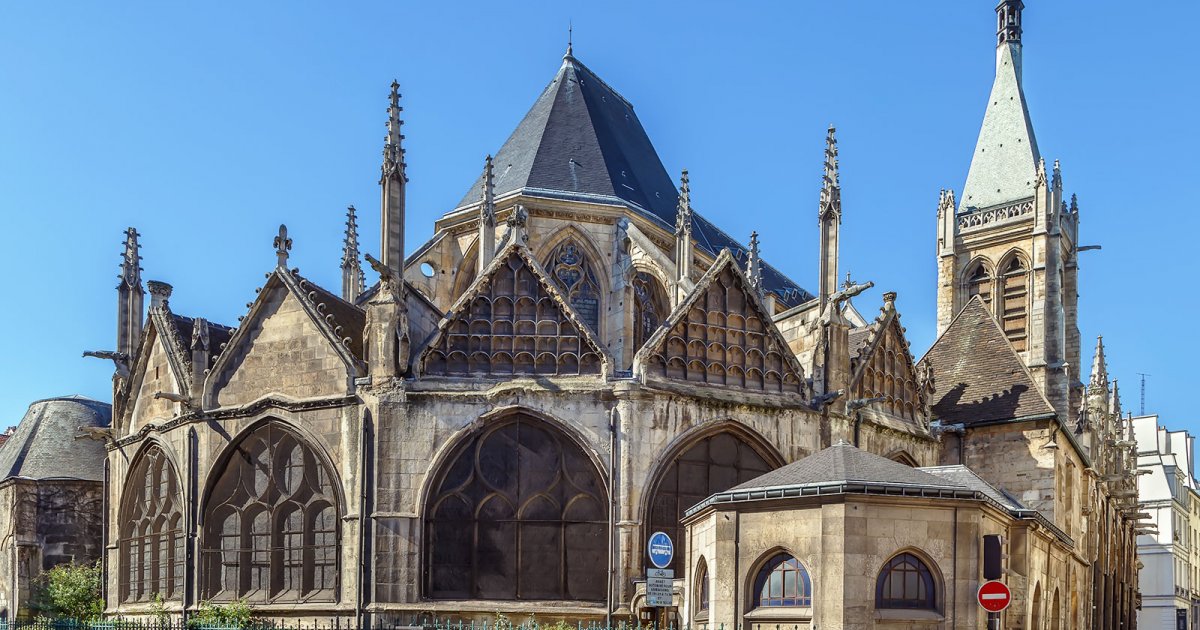LATIN QUARTER, Medieval Churches
 Language: English / USA
Language: English / USA
Your tour of medieval Paris starts almost directly under the side of Notre-Dame at the entrance to Rue Saint-Jacques, where a delightful little garden offers you a corner of peace and silence shaded by centuries-old trees, starkly contrasting the crowds in the cathedral's churchyard. Between flowerbeds lined with architectural fragments from different eras, you'll come across the church of Saint-Julien-le-Pauvre. If you walk around the church and aren't fooled by the bare seventeenth-century façade, you should recognize the linear medieval structure which dates back to a transition period between Romanesque and Gothic.
Practically opposite the church on the other side of the road is the incredible church of Saint-Séverin, where you can see all the main architectural styles from the 1200s to the 1600s, including the 19th-century 'stylistic' restorations. This church has it all: a Baroque vault, an early-Gothic side portal, a fifteenth-century bell tower, and above all, an enchanting, bright, and peaceful Gothic interior. On the back walls the style becomes the so-called "flamboyant Gothic" from the late-15th century, which will leave you speechless with its virtuoso twist of branched vaults and the splendid pillar formed by a group of spiraling columns.
But the masterpiece of this flamboyant style lies beyond the Sorbonne, in the shadow of the Pantheon's large dome. It is the church of Saint-Etienne-du-Mont, which began construction in the late 1400s.
It is truly one of the most beautiful churches in the city, but it's not easy to find. It's at the top of the hill of Sainte Geneviève, and is overlooked by colossal buildings and lost in a huge parking lot.
Admire the strange overlapping of load-bearing elements and pediments of its façade, all angles and odd, unexpected curves; it almost looks like an artisan cake decoration, certainly not architecture. The beautiful flamboyant Gothic interior is covered by vaults supported by very high pillars. At the end of the naves two double-turn spiral staircases climb up to support the beautiful sixteenth-century partition wall. Below this partition wall where the deacon invokes the divine blessing and reads the Gospel, admire the elegance of the slender arch, open at the top by a lightly perforated screen.
FUN FACT: Saint-Julien has kept its medieval architecture, but its interior is hiding a surprise. At the back of the church that's been entrusted to the Catholic community, you can admire a wall decorated with oriental icons that was made in 1900.



